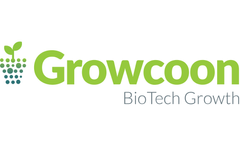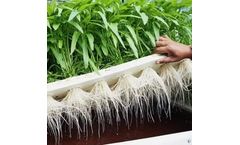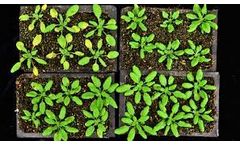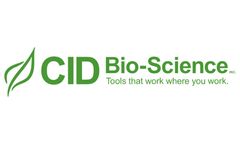Refine by
Plant Tissue Articles & Analysis
35 articles found
In agricultural biotechnology and plant physiology, fatty acids quantification plays a critical role in understanding metabolic pathways, lipid biosynthesis, and nutritional value. ...
Classification of Plant Hormones Plant hormones can be classified into several major types, each with distinct functions that contribute to various physiological processes: Auxins: Primarily found in young, actively growing tissues, auxins, such as indole-3-acetic acid (IAA), are pivotal in regulating cell elongation, directional growth, root ...
Murara Plants Kenya is one of the leading plant propagators in Africa. It is located in Kericho, in the middle of Kenya’s highlands, west of the Great Rift Valley with an altitude of about 2,150 metres above sea ...
Clonal plants through traditional vegetative propagation naturally see diminished performance over time due to inevitable pathogenic contamination that may include intracellular bacteria, fungi, viruses and viroids. ...
Dr. Zobayed has over 25 years of expertise in the tissue culture industry and he's the mastermind behind Segra Internationals plantlet production efforts in Canada. Today he'll be going through the overall process of tissue culture initiation, multiplication and acclimation of tissue culture cannabis plantlets. He'll also review the various methods of tissue culture production including explant ...
Various microbial, viral, and viroid pathogens of cannabis can result in economic loss in commercial cultivation settings. While starting off with uninfected stock material is a crucial first step in combating this, tool and surface sanitation practices in the grow facility are also very important to reduce the chance of spread of any undetected, or newly environmentally acquired pathogens. While ...
These plant microorganisms can be categorized into surface microorganisms and intra-tissue microorganisms based on their colonization sites. ...
Introduction of Cytokinin Cytokinin is an organic compound that belongs to the cytokinin family. It is widely used in plant physiology and agriculture due to its beneficial effects on plant growth and yield. Cytokinin is a potent growth hormone and is commonly used in plant tissue culture, induction of cell division and shoot ...
What is Leaf tissue testing? Leaf tissue testing is a crucial process for evaluating the concentration of essential elements within plant tissue. Essential nutrients, categorised as micronutrients and macronutrients, play key roles in sustaining the plant’s life cycle. Micronutrients, required in smaller ...
Introduction of Cytokinin Cytokinin is an organic compound that belongs to the cytokinin family. It is widely used in plant physiology and agriculture due to its beneficial effects on plant growth and yield. Cytokinin is a potent growth hormone and is commonly used in plant tissue culture, induction of cell division and shoot ...
Hey there, fellow cannabis grower! Welcome to our detailed guide on a common issue many of us face: Why are your cannabis leaves curling up? If you’ve noticed those once luscious green leaves taking on a curious curl, don’t panic just yet! We’re here to help you understand what might be causing this problem. We will guide you through the process of diagnosing and addressing it. ...
If you’re a cannabis grower, you know that healthy plants are essential for a successful crop. However, even with the best intentions and care, nutrient burn can occur and cause significant damage. Nutrient burn is a common problem that can affect cannabis plants. It leads to a range of cannabis leaf symptoms and ultimately affects the plant’s growth and yield. In this article, we ...
1. What is ozonated water, and how is it produced? Ozonated water is simply water infused with ozone gas (O3), a process achieved by passing oxygen through an ozone generator and dissolving it into water. ...
One of the key aspects of precision farming is the ability to move from reactive to proactive practices. In this blog post, we will discuss the benefits of proactive farming and explore tools and techniques to help growers make the transition from reactive to proactive farming. Precision farming is a modern agricultural technique that uses technology to optimise crop production and ...
Edible natural pigments Edible natural pigments are mainly pigments extracted from animal and plant tissues. However, the components of natural pigments are relatively complex, and the purified natural pigments may have different effects from the original ones. ...
Plants are constantly attacked by bacteria, viruses and other pathogens. ...
Perennial plant grower Molter BV in Noordwijkerhout (NL) is making good progress. The new strategy and a new Rovero film greenhouse offer more space for activities at the beginning of the chain: breeding, tissue culture and the propagation of plants from seed, cuttings and tissue culture. ...
ByRovero
Production of Industrial Enzymes Some enzymes are still extracted from animal or plant tissue. Plant sources include proteases, papain, and bromelain, as well as special enzymes such as lipoxygenase in soybeans. ...
Soil-borne pests and diseases are harder to detect than those on the aerial parts of a plant. Visible symptoms in leaves and stem appear only in the final stages of the attacks. If plants are treated at this point, it may be difficult to avoid plant injury, as plants could already have been severely impacted. Early detection and identification are key to prevent crop loss. There are, however, ...
Both proper ambient and soil temperatures are crucial for growing plants and are measured in degrees Celsius or Fahrenheit. High temperatures can cause direct irreversible damage to plant tissue, hasten reproduction at the cost of biomass accumulation, and reduce yield. Heat can indirectly affect plants by increasing ...














